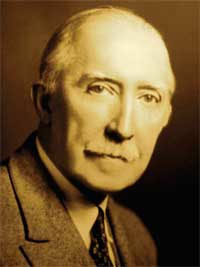
(1873 – 1938) Now two generations past, Fogarty’s work captured the core values of an American Society bookended by world war and economic depression. There is no greater example of this than in his illustration of Jacob August Riis’ Making of an American, or Sailing Alone Around the World, Captain Joshua Slocum’s account of his solo circumnavigation of the world aboard his 40 foot Spray, or his lifelong friendship and illustrative collaboration with Pulitzer Prize winner Ray Stannard Baker’s alter ego, David Grayson. Fogarty was a prolific master having provided countless illustrations in not only some of the most popular books of the period but also in periodicals still popular today including Harper’s, Ladies Home Journal and Good Housekeeping.
In the great tradition of instructors at the Art Students League, Fogarty stands among the greatest. While not a seeker of publicity, Fogarty quietly but firmly encouraged his students to seek avenues where they would find their greatest success. His impact on this nation’s illustrative culture extends in the work of his students. As with many great instructors, Fogarty often placed his responsibility to his students above that of his own ambitions to ensure an ongoing and predestined value in the work of the next generation. When we think of Fogarty the teacher, we simply have to ask ourselves; where would our images of Southern gentility be without Walter Biggs? Where would the great depictions the Pacific Naval Fleet have been without McClelland Barclay or for that matter, where would we be as a nation without Norman Rockwell? Never in the history of American Illustration was there a time when the great illustrative masters fanned the flames of great illustrative talent. His teaching as in his work was as much valued for its artisanship as it was for the cultural values that it instilled.
While a native of New York City, Fogarty was also part of the great tradition of artists who spent summers working in the finger lakes of New York capturing the elegant simplicity of life in Bristol Springs and Naples on Lake Canandaigua. Many summers were spent working in his studio adjacent to the family’s beloved summer cottage, the Wigwam, where he created many of his most famous images in oil and pen and ink. In the fall, the family would return to New York City for him to continue his teaching at The League and his work for many of the most renowned publishing houses of the time.
In 1938, Fogarty died but not before passing his great talent onto his two sons Alexander, a composer, and Thomas, Jr. who followed in his father’s footsteps to become one of the most beloved instructors at the Art Students League and a great American impressionist of his day.
Tom Fogarty
